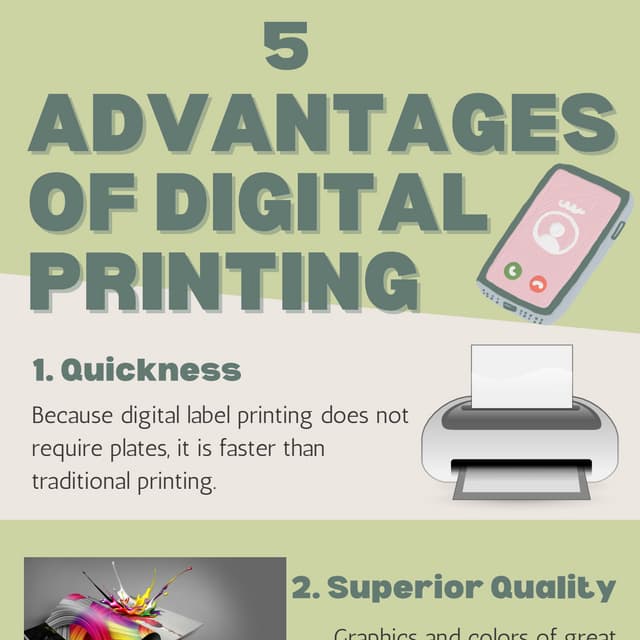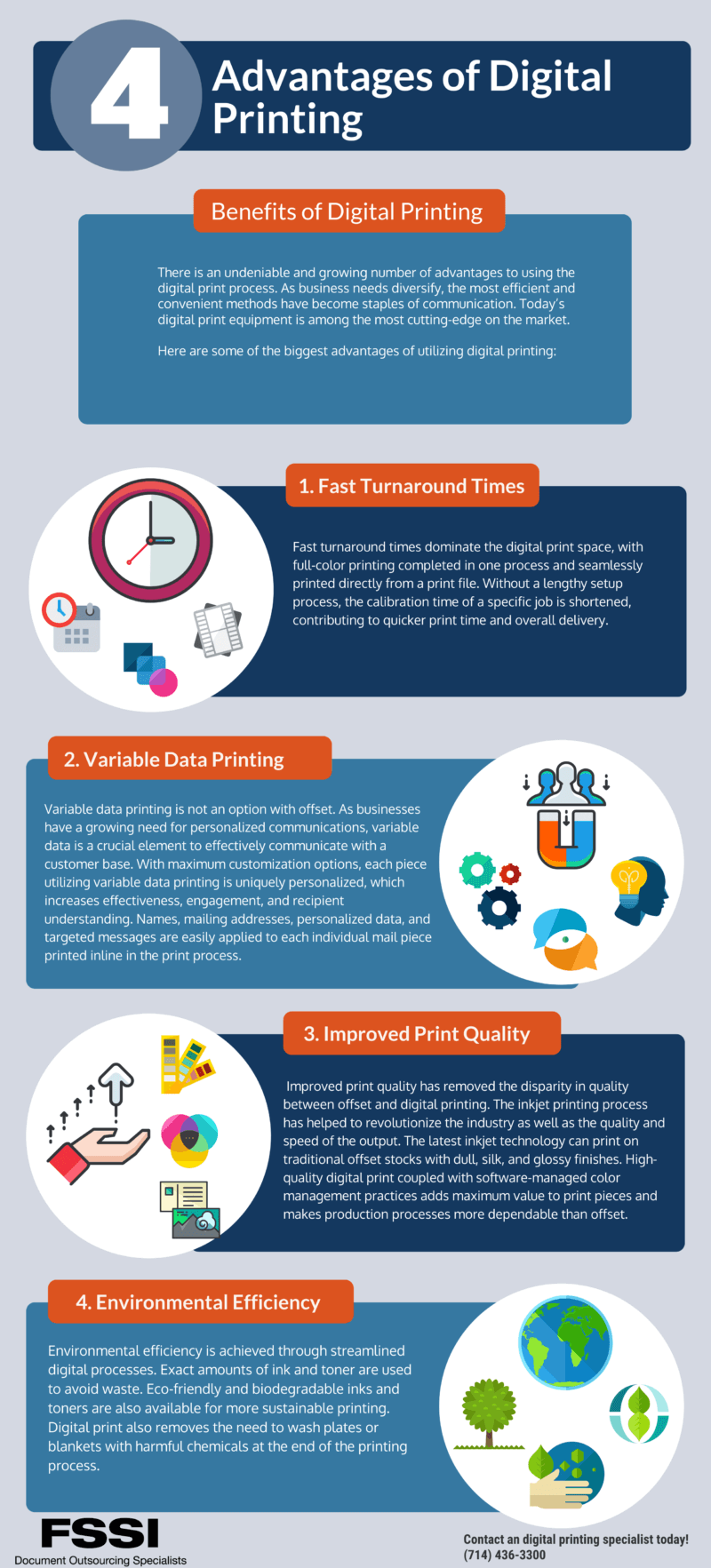The Only Guide to Digital Printing
The Only Guide to Digital Printing
Blog Article
Things about Digital Printing
Table of ContentsRumored Buzz on Digital PrintingGetting My Digital Printing To WorkThe smart Trick of Digital Printing That Nobody is DiscussingLittle Known Facts About Digital Printing.Not known Factual Statements About Digital Printing Digital Printing for Beginners
Variable data printing, such as direct mail with individualized codes and addresses, is ideally matched for digital printing. Digital quick printing just requires 4 actions of layout, evaluation, printing and binding to get whatever done. Digital fast printing has an exceptional benefit: print on demand.According to PMMI, digital printing allows brands and makers to react quickly to customer demands while boosting the supply chain, lowering warehousing price and waste, and delighting in faster time to market. That all audios wonderful, yet exactly how does this technology do all that? The major differentiator of these innovations is that there are no set up charges and no plates with digital printing.
The smart Trick of Digital Printing That Nobody is Talking About
According to Wikipedia, the best difference between digital printing and standard methods such as lithography, flexography, gravure, or letterpress - Digital Printing is that there is no requirement to change printing plates in digital printing, whereas in these analog printing methods home plates are repeatedly replaced. This causes quicker turnaround time and reduces expense when using digital printing.
Fast manufacturing implies getting your product to market quicker. It also suggests it's much easier and faster to make changes later on, when you alter a dish, include a SKU, or develop seasonal packaging. Digital printing is very versatile, so it's simple to make adjustments to the plan style quickly. Everything goes back to home plates.
Extra stock can imply more waste down the road. With conventional printing techniques, short-run printing is just not possible. Because an excellent design can make or damage your item, electronic printing continually creates top notch, clear and vivid graphics each time. Digital printing on adaptable bags includes the intense, vivid, and accurate graphics that virtually bid customers to reach out and touch them.
Digital printing is the process of printing digital-based photos straight onto a selection of media substratums. There is no need for a printing plate, unlike with balanced out printing. Digital files such as PDFs or desktop computer posting documents can be sent out directly to the digital printing machine to print theoretically, picture paper, canvas, material, synthetics, cardstock and various other substrates.
Digital Printing Fundamentals Explained
According to PMMI, electronic printing allows brand names and suppliers to react quickly to client demands while boosting the supply chain, decreasing warehousing expense and waste, and delighting in faster time to market. That all sounds you could try these out fantastic, yet how does this modern technology do all that? The major differentiator of these modern technologies is that there are no set up charges and no plates with digital printing.
According to Wikipedia, the best difference between electronic printing and traditional approaches such as lithography, flexography, gravure, or letterpress is that there is no need to change printing plates in electronic printing, whereas in Go Here these analog printing methods the plates are repeatedly changed. This leads to quicker turnaround time and lowers price when using digital printing.

Facts About Digital Printing Uncovered
A lot more supply can suggest more waste later on. With standard printing techniques, short-run printing is simply not feasible. Due to the fact that a terrific layout can make or damage your product, electronic printing regularly creates high-grade, clear and colorful graphics each time. Digital printing on adaptable pouches includes the bright, vivid, and accurate graphics that virtually beckon customers to connect and touch them.

According to PMMI, electronic printing permits brands and makers to react quickly to customer demands while improving the supply chain, decreasing warehousing cost and waste, and enjoying faster time to market. That all noises fantastic, yet how does this modern technology do all that? The significant differentiator of these innovations is that there are no set-up costs and why not look here no plates with digital printing.
3 Easy Facts About Digital Printing Described
According to Wikipedia, the greatest distinction between digital printing and conventional approaches such as lithography, flexography, gravure, or letterpress is that there is no demand to change printing plates in digital printing, whereas in these analog printing methods the plates are continuously changed. This causes quicker turnaround time and lowers cost when using electronic printing.
Fast production suggests getting your product to market quicker. It likewise implies it's much easier and faster to make adjustments in the future, when you transform a recipe, include a SKU, or produce seasonal packaging. Digital printing is highly versatile, so it's very easy to make adjustments to the package design quickly. Everything returns to the plates.

Things about Digital Printing
Digital printing is the process of printing digital-based images straight onto a selection of media substrates. There is no demand for a printing plate, unlike with offset printing. Digital files such as PDFs or desktop posting files can be sent directly to the electronic printing machine to publish on paper, picture paper, canvas, fabric, synthetics, cardstock and various other substratums.
Report this page